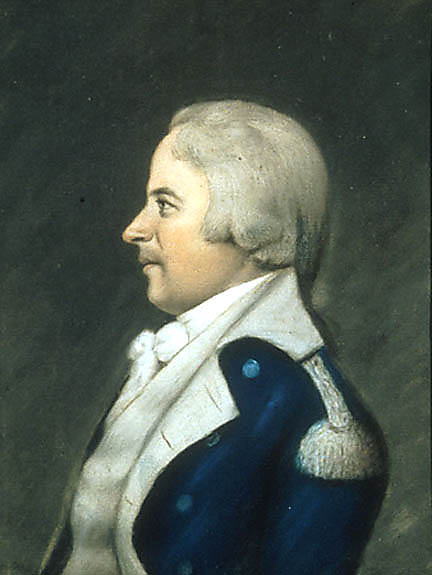
 |
|||||||||||
| WILLIAM HULL 1753-1825 James Sharples Sr., from life, c. 1795-1801 Pastel on paper. H 9, W 7 in (H 22.9, W 17.8 cm) Independence NHP INDE 11911
|
|||||||||||
| About the Man | |||||||||||
|
About this Portrait:
During his family's first visit to the United States, British pastelist James Sharples Sr. (1751-1811) painted a portrait of Hull. Sharples worked in New England, New York, and Philadelphia from 1795 to 1801. After the family's return to England, Sharples published a catalog of pastels including one of General Hull. Until recently, Sharples' Hull portrait was wrongly identified as that of General Anthony Wayne. A second version of this portrait (now owned by the Worcester Art Museum) shows Hull in civilian dress. This pastel is a copy of the Independence portrait, possibly by Sharples or his wife Ellen, and was painted for the subject's family. Ownership History: Listed in the 1801 Bath catalog of Sharples' works. Given by Ellen (Mrs. James) Sharples to Felix Sharples in 1811. Given by Felix Sharples to Levin Yardly Winder in the 1830s. Inherited by Nathaniel James Winder from Levin Yardly Winder. Inherited by Richard Bayly Winder from Nathaniel James Winder in 1844. Purchased by Murray Harrison from Richard Bayly Winder around 1865. Purchased by the City of Philadelphia from Murray Harrison in 1875. |
|||||||||||
|
|||||||||||
|
|
||
|
Note: Prev/next are in alphabetic order within their respective theaters. |
||
Last Modified: